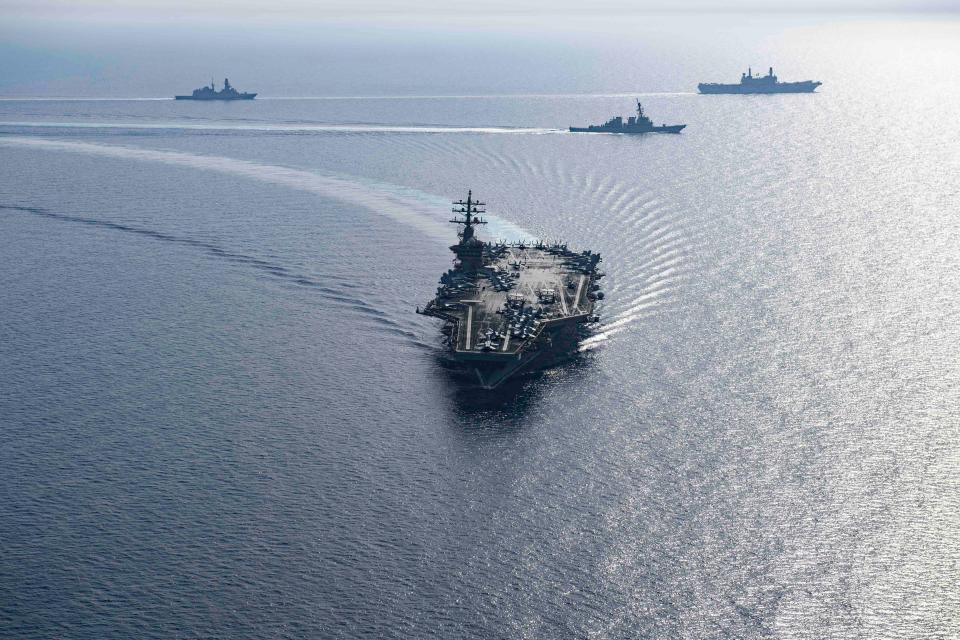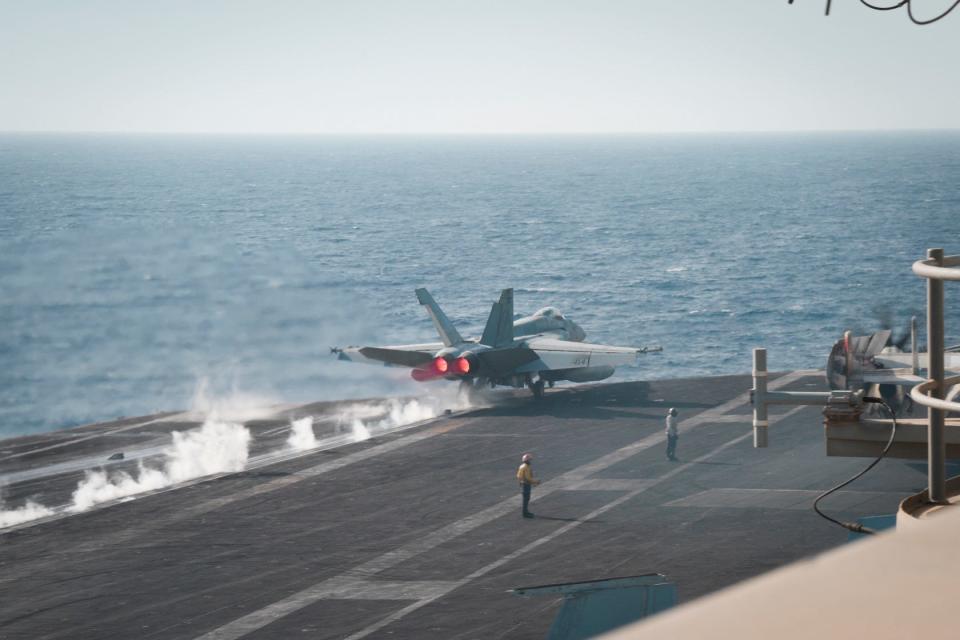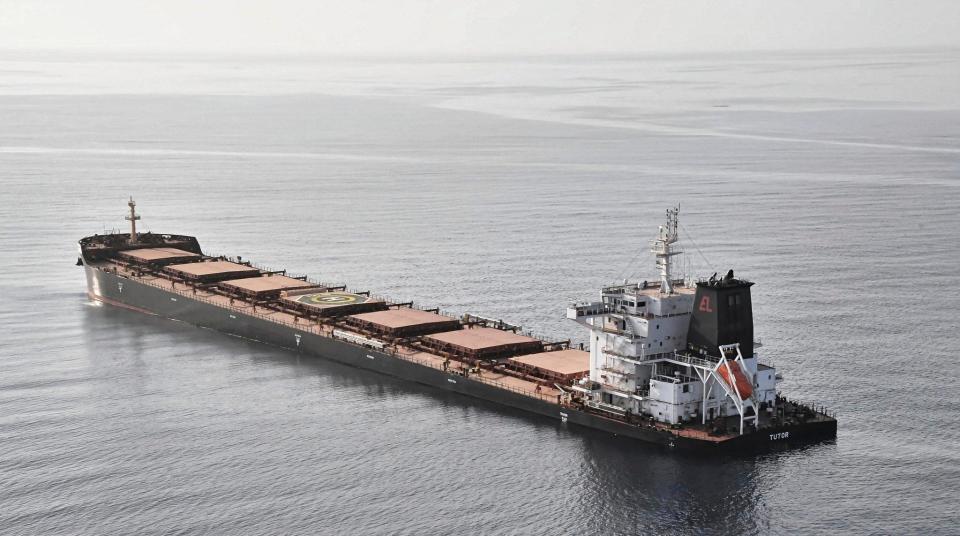Carrier strike group commander who oversaw 'unprecedented' Red Sea battle says the US Navy needs to make sure it's ready for a drone fight
The US Navy has drawn many lessons from its monthslong counter-Houthi mission.
A former strike group commander who oversaw combat credited training for the warships' successes in battle.
But he said future deployments would benefit from more drone training.
American warships have been battling dangerous and unprecedented threats in volatile Middle Eastern waters for months, and the experience has been a valuable lesson for the US Navy.
The threat posed to commercial shipping in the Red Sea and Gulf of Aden by the Iran-backed Houthi rebels persists, showing no signs of letting up anytime soon. Thus, the US Navy's fight goes on.
Among the lessons the sea service has learned from its engagements off Yemen is that the Navy needs more work on defeating drones, Rear Adm. Marc Miguez, a former carrier strike group commander who oversaw nearly the entirety of the Dwight D. Eisenhower Carrier Strike Group's twice-extended deployment, wrote this week.
The strike group — which consists of the aircraft carrier Ike and several other warships — spent more than seven months intercepting Houthi missiles and drones and conducting preemptive strikes against the rebels in Yemen in defense of major shipping lanes before its recent departure.

Reflecting on the counter-Houthi operations and offering some lessons for future Navy combat, Miguez said the Eisenhower carrier strike group's deployment to the Middle East "has been unprecedented in every sense of the word."
"Our operations in the Red Sea have included a long list of 'firsts,' and while we are still learning and iterating, with every missile and unmanned system we engage and destroy, we are gaining important combat experience that will help inform future conflicts," Miguez wrote in commentary for the US Naval Institute.
More drone training
Miguez said there were several important attributes that helped support the Navy in its fight against what he described as "an unpredictable adversary." One of these elements was the intense training that the strike group received ahead of time.
"Take it seriously," he wrote. "Different adversaries require different tactics. The IKE CSG trained to be agile, flexible, and lethal."

"I attribute our success in the Red Sea to the pre-deployment training we received, especially the innovative approach to combat readiness," Miguez continued. However, he acknowledged that "future deployers would benefit from incorporating more unmanned (air, surface, underwater) scenarios in the training continuum."
Along with missiles, the Houthis have consistently launched airborne drones throughout their campaign and have found recent success using surface drones, also known as drone boats, in their attacks. The rebels have tried, in a few instances, to deploy underwater drones, according to the US military.
Drones are an emerging threat in naval warfare, as Ukraine has demonstrated by using a fleet of drone boats to inflict severe damage on Russia's Black Sea Fleet.
These conflicts present new training and defensive considerations for the US Navy as it looks ahead toward future warfighting and the evolving drone threat. But the lessons for the US Navy extend beyond drones.

"The threats we are combating in the Red Sea are not unique to the Houthis," Miguez said. "Lessons from this historic deployment will be used to address anti-ship capabilities across the fleet, including against pacing threats identified by the Department of Defense."
That's why, he added, "for every engagement we prosecute, every missile we detect, and every UAV we see flying, we send that data to the experts ashore, so they can analyze and make improvements for the next deployers."
This has been the case with the Houthis' anti-ship ballistic missiles, weapons that hadn't been used in combat until this conflict. Miguez told Business Insider during a visit to the Ike in the Red Sea earlier this year that the Navy has learned a lot from engaging these deadly threats.
Rear Adm. Kavon Hakimzadeh took over for Miguez as the commander of the Eisenhower strike group just days before it finally left the Red Sea on June 22 to head home, putting a lid on a restless deployment. The Theodore Roosevelt Carrier Strike Group will soon take over the Eisenhower's responsibilities in the Middle East.
Until it arrives, the Navy will not have an aircraft carrier in the region for the first time in a while. The shuffling of America's naval assets comes on the heels of an active few weeks for the Houthis, who hit several commercial vessels in June and have stepped up their attacks with explosive-laden drone boats.
Read the original article on Business Insider

